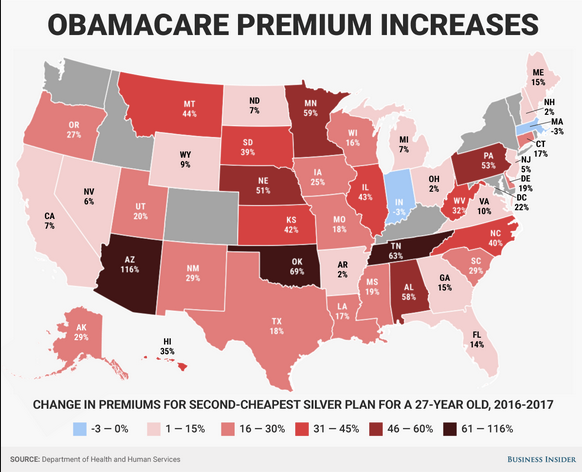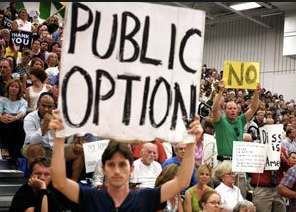No, it’s not a “death spiral” — subsidies keep insurance affordable for most people even if premiums rise sharply, and the Congressional Budget Office believes that markets will remain stable. But the system could and should be improved. How?
Note that healthcare insurance premiums have been on the rise for years so increases are expected each year. That said, there are Obamacare insurance premium hikes in the over 61% up to 116% in AZ, OK and TN. At the same time, two states, IN and MA saw actual decreases in premiums. CA, NV, WY, ND, AR GA, VA, ME, NH, and others saw increases of only 1% to 15%. There are many variables that contribute to a state’s Obamacare experience, evidenced by dramatically different premiums increases.

One important answer would be to spend a bit more money. Obamacare has turned out to be remarkably cheap; the Congressional Budget Office now projects its cost to be about a third lower than it originally expected, around 0.7 percent of G.D.P. In fact, it’s probably too cheap. A report from the nonpartisan Urban Institute argues that the A.C.A. is “essentially underfunded,” and would work much better — in particular, it could offer policies with much lower deductibles — if it provided somewhat more generous subsidies. The report’s recommendations would cost around 0.2 percent of G.D.P.; or to put it another way, would be around half as expensive as the tax cuts for the wealthy Republicans just tried and failed to ram through as part of Trumpcare.
What about the problem of inadequate insurance industry competition? Better subsidies would help enrollments, which in turn would probably bring in more insurers. But just in case, why not revive the idea of a public option — insurance sold directly by the government, for those who choose it? At the very least, there ought to be public plans available in areas no private insurer wants to serve.




